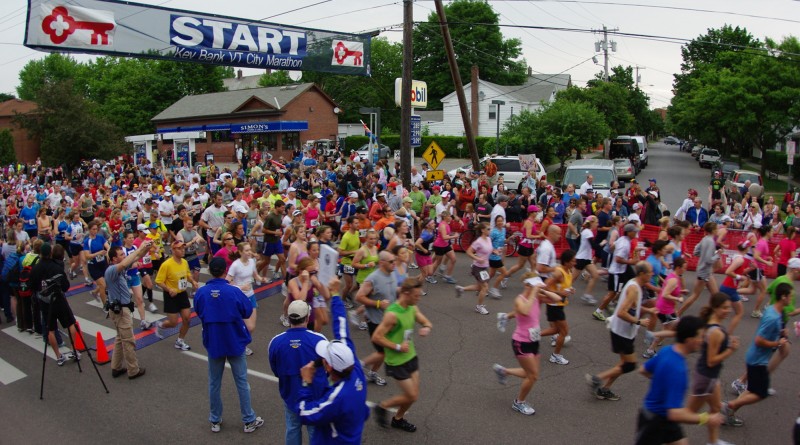Everyone Should Run a Marathon | Sports Medicine May 2011
The world would be a better place if we all trained for a marathon. People would be healthier, happier, and kinder to each other. Every athlete knows that running can be a form of meditation, and that it can help the mind solve difficult problems. Running is a fast way to help discover yourself.
Preventing injury by avoiding common mistakes is the best insurance for keeping the runner on course, so here are some often forgotten training tips.
Rest
The single biggest mistake made by many athletes is failing to schedule rest into the training schedule. Easy training days are filtered between hard days. Fast, speed workouts are mixed with long, slow, distance training, but too many times rest is not a factor in the training schedule. Bill Rodgers is perhaps the most famous American marathoner. He ran in 59 marathons, winning 22, with his most famous races being in Boston. Bill said that he could beat any working man, as the person who works doesn’t have enough time to rest. Another Boston marathoner, and very good friend, is Rosa Mota. She raced in 22 world-class marathons, winning gold 14 times, including three Boston crowns. I worked with Rosa in the early days of her race career, after her first marathon gold medal in the 1982 Athens, Greece, marathon. Rosa’s coach, Jose Pedrosa, insisted that Rosa train twice per day. Between the morning run and the afternoon workout, Rosa had to nap for two hours. Pedrosa, a physician himself, insisted that rest was the most important item on the training agenda. Both Rosa and Bill taught me the importance of a good nap. Learn to power-nap during your workweek. Schedule 20 minutes of downtime during lunch daily, and play catch-up on weekends with a midafternoon, two-hour rest after a morning workout.
Inadequate Training
Cardiovascular fitness comes in many forms. The swimming athlete may be fit, but not in shape to run the marathon, as gravitational forces on the lower kinetic chain are absent in the swim workout. The runner increases gravitational forces on the body by two to 12 times, and this takes muscle specialization and strength to carry the body through a race distance. This same concept applies to the fit cyclist with super leg strength. These same strong muscles lack the conditioning to carry a runner 26.2 miles. As a an example, the average person will strike each foot 2,112 times per mile for a total of 55,334 strikes for the marathon. If this same person weighs 150 pounds, it would mean that each foot and leg would carry 4,150 tons for the marathon distance, and this does not factor in increased gravitational forces. The efficient runner will have a factor closer to two, and the least efficient athlete will be much higher. Faster runners are smoother, use less energy, and pound the ground easier. Choose a training schedule that will gradually take you on longer and longer distances over a period of months, so that muscle adaptation will take place with a low incidence of injury.
Hydration and Nutrition
The long-distance runner must learn to hydrate on the run. Water is necessary for the smooth function of muscle and tendon tissue, as well as joints. On a daily basis, the athlete should be drinking a minimum of 64 ounces of fluids. Water is still the best and cheapest. However, when exercising, consumption should be increased, and a good rule to follow is to drink when thirsty. The first sign and symptom that you may be dehydrated will be twitching of the eyelid, followed by muscle stiffness or soreness. The best hydration gauge is your urine. It should always be straw colored or clear as water. If the color darkens (tea like), you can be sure you are on the verge of dehydration.
Endurance runners should stay away from protein supplements, as these will increase the need for fluids. The best diet is eating the good, healthy, complex carbohydrates found in fruit, vegetables and grains; along with clean proteins found in fish and poultry, and polyunsaturated fats. I found that my body worked best on 85 percent complex carbohydrates and 15 percent fat protein and fat. Experiment and you will find very quickly what works best for your machine.
Keep a Daily Log
Like rest, this is often an overlooked item, but it is a key to staying injury free. Your log should include notes on sleep patterns, running distances, temperature and humidity during the workout, heart rate, and finally, simply how you feel each day. Any variations in pattern can be an indication of troubled waters. The log is a barometer for an injury about to happen. If all is well, your log will indicate only feelings of well-being. When this changes, you might want to take heed and schedule a day off from training.



